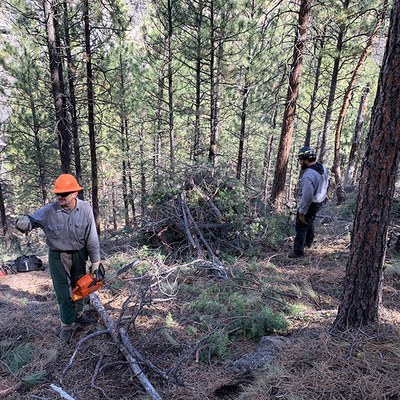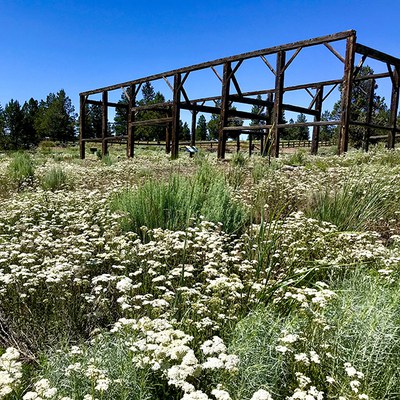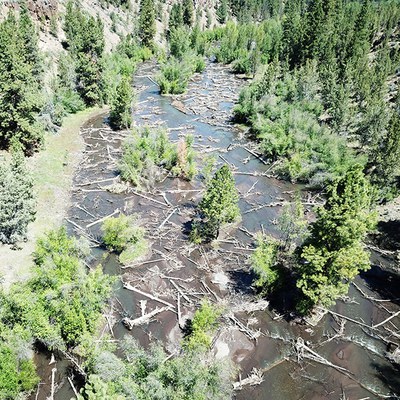One of Deschutes Land Trust's core focus areas is stewarding the lands entrusted to us.
Our protected lands help wildlife thrive, they keep our air and water clean, and they help us fight against climate change.
Healthier natural systems mean healthier communities for all of us. We rely on our forests, meadows, and streams for the air we breathe, for the water we drink, and for inspiration and rejuvenation. And we need healthy systems that can adapt to our changing climate— now and far into the future.
Some of the lands we conserve are in great condition and just need protection. Other places need help to recover so they can provide homes for wildlife, clean the air and water, and absorb carbon from the atmosphere. That’s where restoration comes in.
Forest Restoration

Our end goal is to create a diverse forest that includes openings where light can penetrate and promote the growth of healthy vegetation and denser areas where wildlife can find cover.
This diversity of structure is great for both the plants and the animals. It also helps protect our neighbors from the spread of catastrophic wildfire.
Our approach:
Our forest restoration happens either mechanically, where we remove selected trees using equipment, or by hand, where we cut small trees using chainsaws, then build piles and come back and burn the piles later when conditions are safe to do so.
In addition, we are working to bring fire back to the landscape through prescribed burning.
Learn more about our forest restoration efforts:
- Metolius Preserve forest restoration
- Aspen Hollow Preserve forest restoration
- Indian Ford Meadow Preserve aspen restoration
- Whychus Canyon Preserve forest restoration
Meadow Restoration

Our approach:
How we wage the battle depends on lots of factors, like what types of weeds they are, where they’re located, what the terrain is like, and how big of an area they cover.
In some situations, we rely heavily on our amazing Weed Warrior volunteers to pull the weeds by hand.
In other areas, like at Camp Polk Meadow Preserve, we spread huge sheets of plastic out on the ground after we’ve cleared it. Then we weight down the edges to keep it in place and let the sun cook the soil all summer long. The heat that builds up under the plastic kills the weed seeds. Then we remove the plastic and plant the area with lots of native grasses and wildflowers.
Learn more about our meadow restoration efforts:
Creek Restoration

Our approach:
Sometimes we work with our restoration partners to use heavy equipment to adjust elevations, construct pools, channel networks and other important habitat features.
Other times we take a lighter approach and follow the beaver’s lead by hand building mini dam-like structures that help slow water flow and create new side channels.
Either way, we’re able to provide the space needed for nature to reclaim her natural processes, for water to spread out and soak in, for fish and wildlife to thrive, and for our local communities to engage and participate in this important work.
Learn more about our creek restoration efforts:
- Whychus Creek at Camp Polk Meadow Preserve
- Our Ochoco Preserve Project
- Whychus Creek at Rimrock Ranch
- Multi-Year Willow Springs Preserve Restoration


